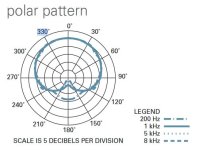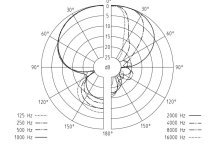Jon.Bryant
Well-known member
I am thinking of trying to use a lavalier mic with a small recorder and battery pack to get close recordings of singing birds this spring.
I am thinking of purchasing a CLIPPY EM272 mono microphone, as this has better sensitivity and S/N ratio than most other lavalier mics I own (which came 'free' with F2 and Rode Wireless Pro).
The datasheet for the EM272 states 'operating voltage 5V'. I have two small recorders (Tentacle Track E and Zoom F2) that I could use, but I note that the F2 states that the PiP is 2.5V (the Track E says 5V),
Does anyone know if the Clippy EM272 will work with the F2, given the apparent disparity between PiP voltage and operating voltage - 2.5V cf 5.0V?
I would prefer to use the F2 with the lavalier, as I use the Tentacle with a different mic and may want to use both mics at the same time. Also, I would feel more 'comfortable' leaving the cheaper recorder unattended for a few hours.
I am thinking of purchasing a CLIPPY EM272 mono microphone, as this has better sensitivity and S/N ratio than most other lavalier mics I own (which came 'free' with F2 and Rode Wireless Pro).
The datasheet for the EM272 states 'operating voltage 5V'. I have two small recorders (Tentacle Track E and Zoom F2) that I could use, but I note that the F2 states that the PiP is 2.5V (the Track E says 5V),
Does anyone know if the Clippy EM272 will work with the F2, given the apparent disparity between PiP voltage and operating voltage - 2.5V cf 5.0V?
I would prefer to use the F2 with the lavalier, as I use the Tentacle with a different mic and may want to use both mics at the same time. Also, I would feel more 'comfortable' leaving the cheaper recorder unattended for a few hours.






